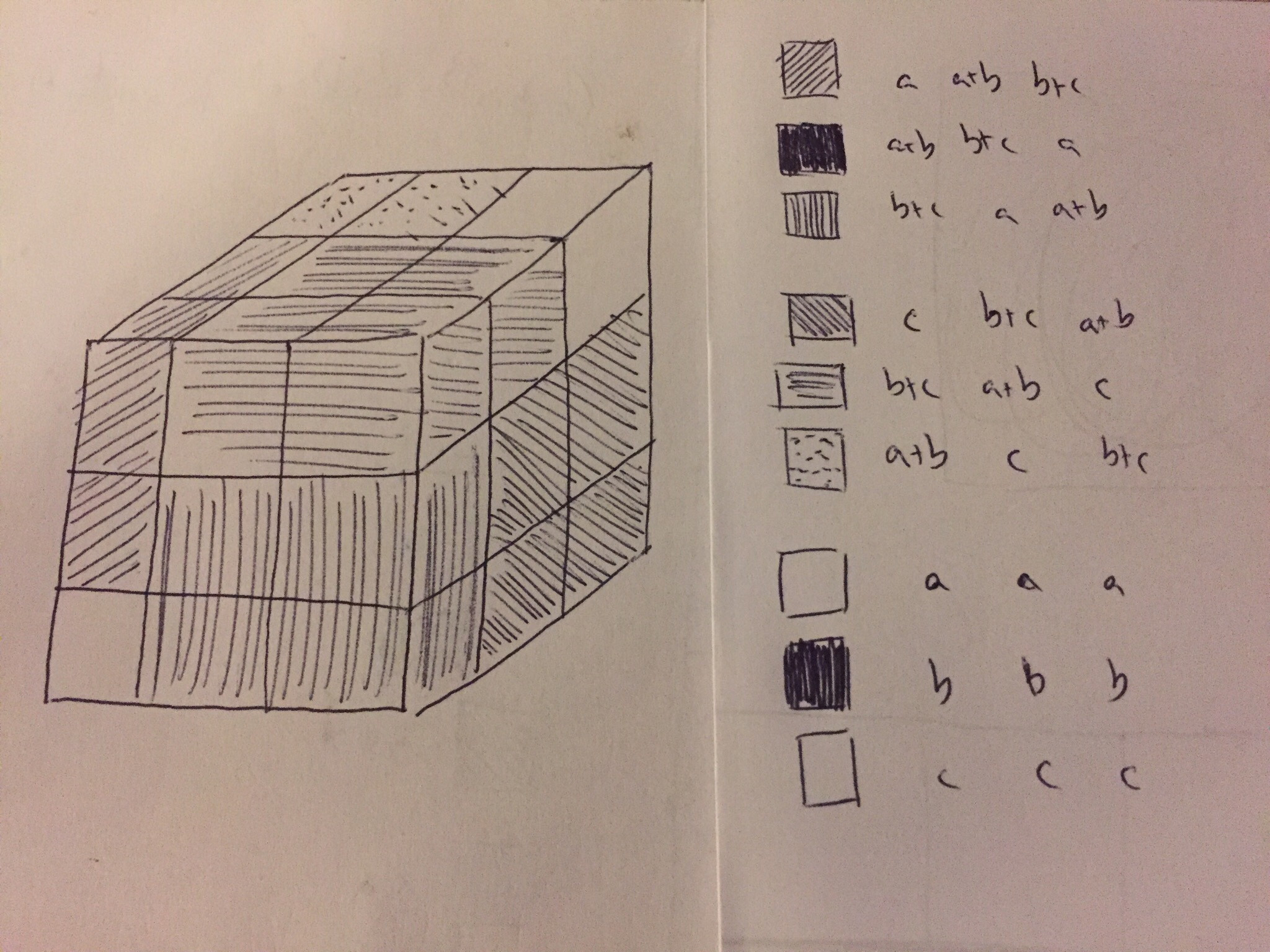I'm looking for a geometric or combinatorial depiction of the algebraic identity $$ xyz = \frac{1}{24} \Big\{(x+y+z)^3 - (x-y+z)^3 - (x+y-z)^3 + (x-y-z)^3 \Big\}. \label{*}\tag{$*$} $$ Here is the kind of thing I'd like. For the simpler identity $xy = \frac{1}{4} \big\{(x+y)^2 - (x-y)^2 \big\}$ we can rearrange to $(x+y)^2 = (x-y)^2 + 4xy$. Now, if $x>y>0$, we can take a square with side length $x-y$, and $4$ rectangles of size $x \times y$, and put them together to make a square of side length $x+y$. Just put the little square in the middle and the rectangles around its sides.
My idea was to rearrange $\eqref{*}$ into $$ (x+y+z)^3 = (-x+y+z)^3 + (x-y+z)^3 + (x+y-z)^3 + 24xyz . $$ Then, suppose $x,y,z>0$ and they satisfy triangle inequalities. Now three cubes of edge lengths $-x+y+z$, $x-y+z$, and $x+y-z$, plus $24$ "bricks" of size $x \times y \times z$, have the same volume as a cube of edge length $x+y+z$. Unfortunately it's not generally possible to stack the 3 little cubes plus $24$ bricks into a big cube.
(Try $(x,y,z)=(11,13,17)$. The only way to get the right areas of faces of the big cube is for each face of the big cube to have exactly one face of a little cube, plus $4$ faces of bricks. And the little cubes have to be centered on the big cube faces; they can't be in the corners or the middles of the edges. But there are $6$ big cube faces and only $3$ little cubes.)
This is a bit open-ended, but can anyone suggest a different way to illustrate the identity, especially if it can be depicted in a graphic? Maybe a different algebraic rearrangement of $\eqref{*}$, or another shape besides cubes?


$(a+b+c)^3=a^3+b^3+c^3+3(a+b)(a+c)(b+c)$. Does this help? $\endgroup$